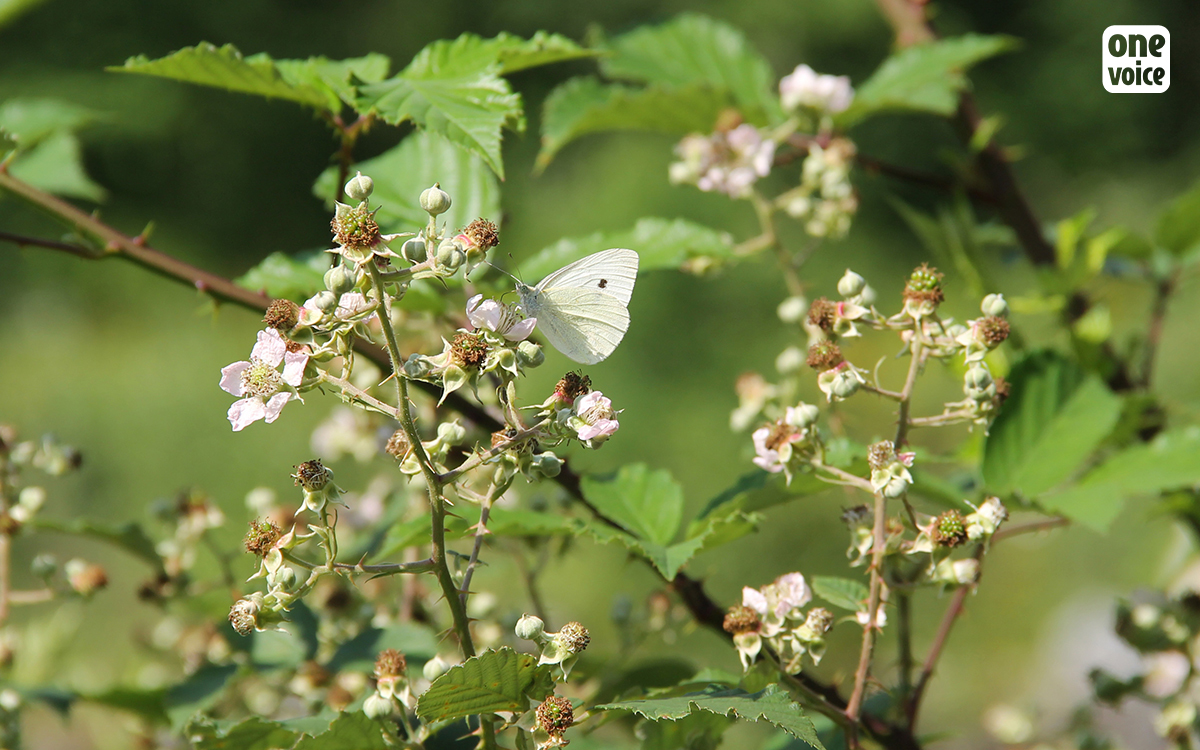
The bramble, the unloved one
One Voice leads a nonviolent fight to defend animal rights and respect all life forms. The organization operates independently and is thus free to speak and act freely.
At first glance, the bramble is repulsive. Carrying its thorns as a standard, this plant seems to go to war and it is declared. But don’t just judge it by its looks. Under its hostile appearance, the unconditional pursues only one goal: to restore its rights to nature and to give birth to life.
Intrepid
and fiery, the common bramble (Rubus fruticosus), when it rises, it
has a feverish ardour. Yet rejected, evicted, abused, it clings, and
does not let go of anything. But what is the secret of this woody
plant which, even torn up, cut down, burned, scalded, it always ends
up reborn from the ashes and lives on, more valiant than ever, to
attack the horizons it covets ?
Fight for life
It’s
a conqueror! And nothing can extinguish the flame that inhabits it
… But let no one be mistaken: this member – as illustrious as
despised – of the rosacea family may be equipped with long stinging
stems, no desire at home to violate anyone or to sow discord! If its
sharp thorns cling so passionately to the paths they take, it is only
to make life triumphant! And they only play a role of shielding
against those who would like to divert them from this mission.
Green activist
For
yes, the bramble, under its raw appearance, is animated by a noble
vocation: to give at all costs its rights to nature! And claim them
vigorously when they have been flouted … Thus, it is one of the
first to appear spontaneously on abandoned land, in the countryside
as in the city. Green spaces, roadsides, piles of rubble, rubbish
dumps, suit it as much as the wastelands, the hedges or the edges of
a wood. As soon as its attraction to direct light is properly
satisfied, this pioneer adapts easily to all kinds of habitats,
opening the way for a host of species evolving in its wake.
Let the charm act!
Try
to block it and it’ll get out its claws! As soon as it feels
threatened, cut, persecuted, it enters into resistance and repels
more, while its thorns multiply and thicken. They even load more
toxins to become more aggressive! It is therefore better to let it
work, as a fine lace maker does. Pursuing a logic as botanical as it
is subtle, it masters the art of re-establishing bare soils or in
transition between plains and forests. Equipped with a growth hormone
and an asexual mode of reproduction (vegetative multiplication)
extremely effective, it develops at high speed V (several centimetres
per day)! Its branches extend in all directions and intermingle so
well that they quickly form thorny groves, the famous wild mulberry
bushes.
By my bramble …
Under
their protective armour, a forest ecosystem tries to be recreated,
making the happiness of young tree shoots, still too fragile to
defend against large herbivores, as well as a multitude of animals.
Rabbits and hares, in particular, install their burrows there and the
birds there make their nests, well sheltered. Meanwhile, above the
ramparts of branches, bees forage for flowers, deer feast on leaves,
and foxes, polecats, badgers, martens or weasels feast on
blackberries during the summer and until the beginning of the season,
Autumn. This farandole of living causes nature to gradually resume
strength and assurance. And when the bramble no longer feels
indispensable to plead its cause, it ends up disappearing … At this
moment, while contemplating the work that it has left, one becomes
aware of the dimension of the artist and one is surprised to regret
its presence. So, if by then the wild man with the heart of gold
knocks at your door, know how to applaud his coming, full of sweet
promises and appreciate it at its true value … To love it with
dignity, join the Arches of nature !